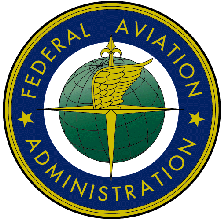Fri, Jan 10, 2003
 The U.S. Department of Transportation's Federal
Aviation Administration (FAA) just announced that El Salvador
complies with international safety standards set by the
International Civil Aviation Organization (ICAO) and has given the
country a Category 1 rating following a reassessment of its civil
aviation authority. El Salvador was previously rated Category
2.
The U.S. Department of Transportation's Federal
Aviation Administration (FAA) just announced that El Salvador
complies with international safety standards set by the
International Civil Aviation Organization (ICAO) and has given the
country a Category 1 rating following a reassessment of its civil
aviation authority. El Salvador was previously rated Category
2.
Inspectors from the FAA Flight Standards International Field
Office, located in Miami, FL, worked closely with the Central
American Aviation Safety Agency in providing technical resources to
help El Salvador take the actions necessary to meet its ICAO
obligations.
This announcement is part of the FAA's International Aviation
Safety Assessment (IASA) program, under which the agency assesses
the civil aviation authorities of all countries with air carriers
that operate to the United States and makes that information
available to the public.
 The
assessments are not an indication of whether individual foreign
carriers are safe or unsafe. Rather, they determine whether or not
foreign civil aviation authorities (CAA) are meeting ICAO safety
standards, not FAA regulations.
The
assessments are not an indication of whether individual foreign
carriers are safe or unsafe. Rather, they determine whether or not
foreign civil aviation authorities (CAA) are meeting ICAO safety
standards, not FAA regulations.
Countries with air carriers that fly to the United States must
adhere to the safety standards of ICAO, the United Nations'
technical agency for aviation that establishes international
standards and recommended practices for aircraft operations and
maintenance.
The FAA, with the cooperation of the host civil aviation
authority, assesses countries with airlines that have operating
rights to or from the United States or have requested such
rights.
Specifically, the FAA determines whether a foreign civil
aviation authority has an adequate infrastructure for international
aviation safety oversight as defined by ICAO standards. The basic
elements that the FAA considers necessary include:
- laws enabling the appropriate government office to adopt
regulations necessary to meet the minimum requirements of
ICAO;
- current regulations that meet those requirements
- procedures to carry out the regulatory requirements
- air carrier certification, routine inspection, and surveillance
programs, and
- organizational and personnel resources to implement and enforce
the above.
The FAA has established two ratings for the status of these
civil aviation authorities at the time of the assessment: (1) does
comply with ICAO standards, (2) does not comply with ICAO
standards.
More News
Aero Linx: Transport Canada We are a federal institution, leading the Transport Canada portfolio and working with our partners. Transport Canada is responsible for transportation p>[...]
Gross Navigation Error (GNE) A lateral deviation from a cleared track, normally in excess of 25 Nautical Miles (NM). More stringent standards (for example, 10NM in some parts of th>[...]
From AirVenture 2017 (YouTube Edition): Flight-Proven Booster On Display At AirVenture… EAA AirVenture Oshkosh is known primarily as a celebration of experimental and amateu>[...]
Aircraft Parachute System (CAPS) Was Deployed About 293 Ft Above Ground Level, Which Was Too Low To Allow For Full Deployment Of The Parachute System Analysis: The day before the a>[...]
Also: 48th Annual Air Race Classic, Hot Air Balloon Fire, FAA v Banning 100LL, Complete Remote Pilot The news Piper PA-18 Super Cub owners have been waiting for has finally arrived>[...]
 ANN's Daily Aero-Linx (06.29.25)
ANN's Daily Aero-Linx (06.29.25) ANN's Daily Aero-Term (06.29.25): Gross Navigation Error (GNE)
ANN's Daily Aero-Term (06.29.25): Gross Navigation Error (GNE) Classic Aero-TV: Anticipating Futurespace - Blue Origin Visits Airventure 2017
Classic Aero-TV: Anticipating Futurespace - Blue Origin Visits Airventure 2017 NTSB Final Report: Cirrus SR22
NTSB Final Report: Cirrus SR22 Airborne Affordable Flyers 06.26.25: PA18 Upgrades, Delta Force, Rhinebeck
Airborne Affordable Flyers 06.26.25: PA18 Upgrades, Delta Force, Rhinebeck




